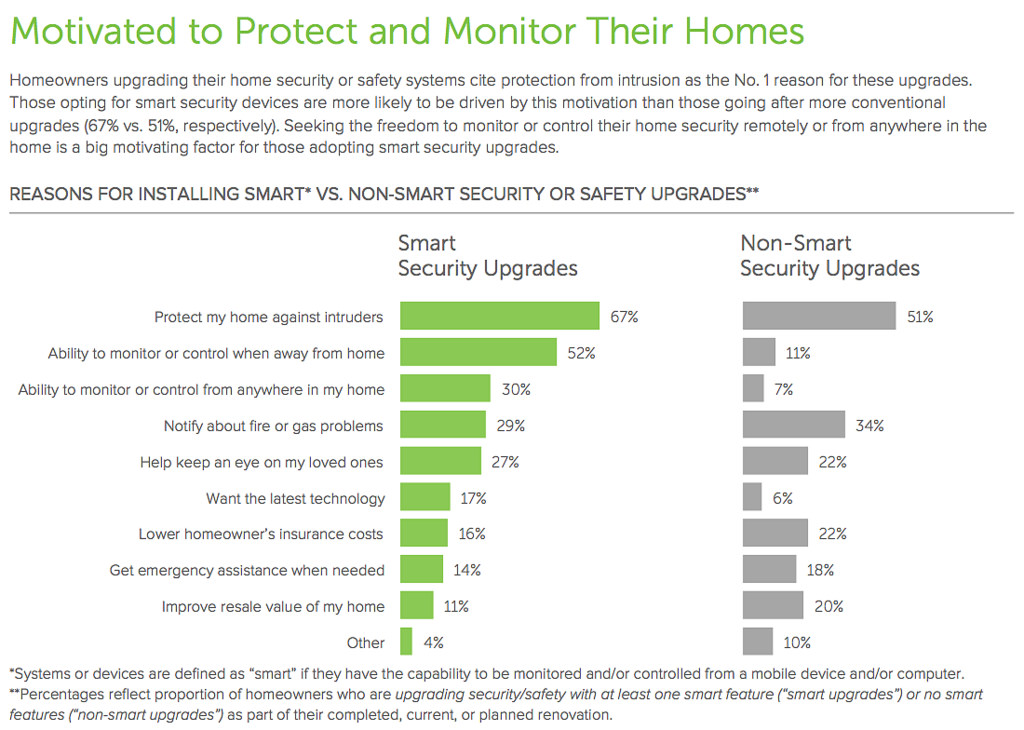According to most leading industry trackers, the home improvement industry has surpassed its prerecession peak in 2016 and is on track to continue its expansion in 2017.1 These trends are born out in our 2017 Houzz State of the Industry study, where a third or more of businesses on Houzz report that 2016 was the best year in the last 10 years since the 2007 financial crisis and two thirds report that 2016 was an above average year. Revenue continued to grow at an average rate of 7-10% across the industry groups in 2016 and expectations for 2017 revenue growth are high.

Our research points to three key factors that are propelling the industry growth today.
Growth Driver #1: Aging Housing Stock
According to the 2015 Houzz and Home survey of homeowners on Houzz, 52% of homes were built before 1981 and only 19% were built after 2000.2 This is consistent with 2015 government data that show that a median home was built in 1976,3 i.e., is 39 years old. Older homes require a vast array of replacements and repair, from updating home systems, such as electrical wiring or panels, to upgrading exterior building features, such as weathered roofing or siding. These homes also tend to be smaller, prompting homeowners to add more square footage. Finally, homeowners are apt to upgrade the outdated style, features, and/or appliances in older homes by remodeling kitchens and bathrooms (e.g., a median kitchen and bathroom is updated every 25 and 23 years, respectively4) and other living spaces.
Growth Driver #2: Older homeowners
According to the U.S. Census, the average homeownership rate was 64% in 2016,5 with 37% and 44% of homeowner households concentrated in the 35-54 and 55+ age groups, respectively.6 This is a critical trend for the home renovation industry, as older and more established households are the biggest spenders on home improvement. For example, according to the 2016 Houzz and Home study, homeowners in the 35-54 and 55+ age groups spent, an average, $52,100 and $73,300 on 2015 home renovations, respectively, compared to only $24,500 by those under 35.7 Older homeowners have a greater propensity to spend on home improvements, as they earn greater income and/or have greater savings than younger households. They are also more likely to remain in their current home for more than a decade.8
Growth Driver #3: Strong Consumer Confidence
Consumer confidence is a major indicator of how likely consumers are to spend on goods and services, and consequently is an important indicator for the home improvement industry. 2016 closed at the highest levels in 15 years, with the Conference Board index reporting 113.3.9 Consumer confidence is rooted in home prices and job market conditions, among other factors. It helps that home prices have fully recovered relative to the prerecession peak on a national level,10 propping up home equities. Furthermore, the unemployment rate has returned to the pre-recession low levels of 4.6-4.7% and the economy has been gaining jobs for the past seven years in a row.11
All in all, the combination of professional and consumer optimism and aging homes and population will be key to continued industry growth. That said, a number of factors are holding the industry back, including lagging existing home sales, declining homeownership rates, and severe labor shortages. We, at Houzz Research, continue to watch and estimate the extent to which these factors are impacting the industry. Stay tuned.
1 Harvard Joint Center for Housing Studies, Remodeling Futures Group, October 2016 Presentation; Hanley Wood MetroStudy Q3 2016 Release, HIRI RnR Estimates Reported in Goldman Sachs, Americas: Capital Goods, 2017 Outlook.
22016 Houzz and Home Study, p. 44.
3American Housing Survey 2015.
42015 Kitchen Study, p. 11 and 2015 Houzz Bathroom Study, p. 8.
5U.S. Census, Release Number C17-05.
6American Housing Survey 2015.
72016 Houzz and Home Study, p. 44.
82016 Houzz and Home Study, p. 7.
9The Conference Board, Consumer Confidence Index
10S&P CoreLogic Case-Shiller U.S. National Home Price NSA Index, November 2016.
11 U.S. Bureau of Labor Statistics, Current Population Survey - Unemployment and Job Report.


















